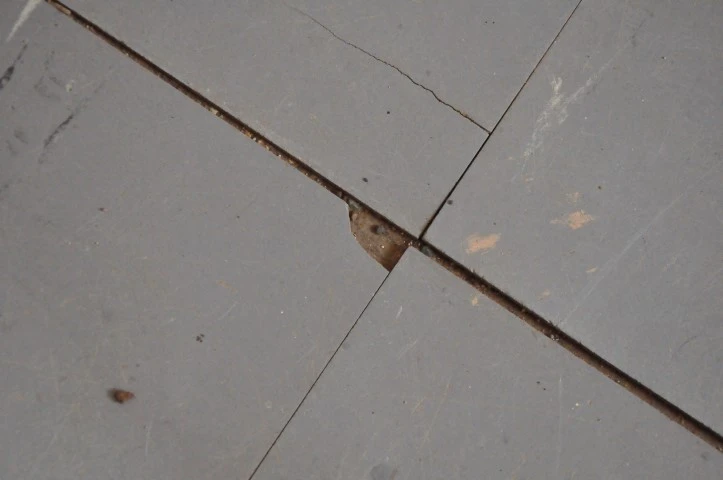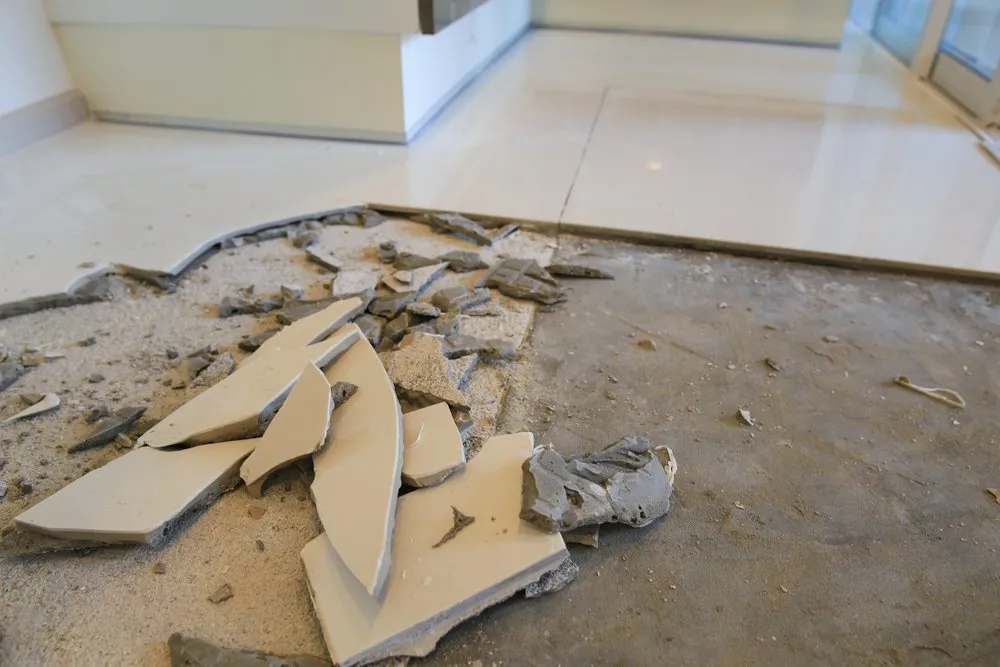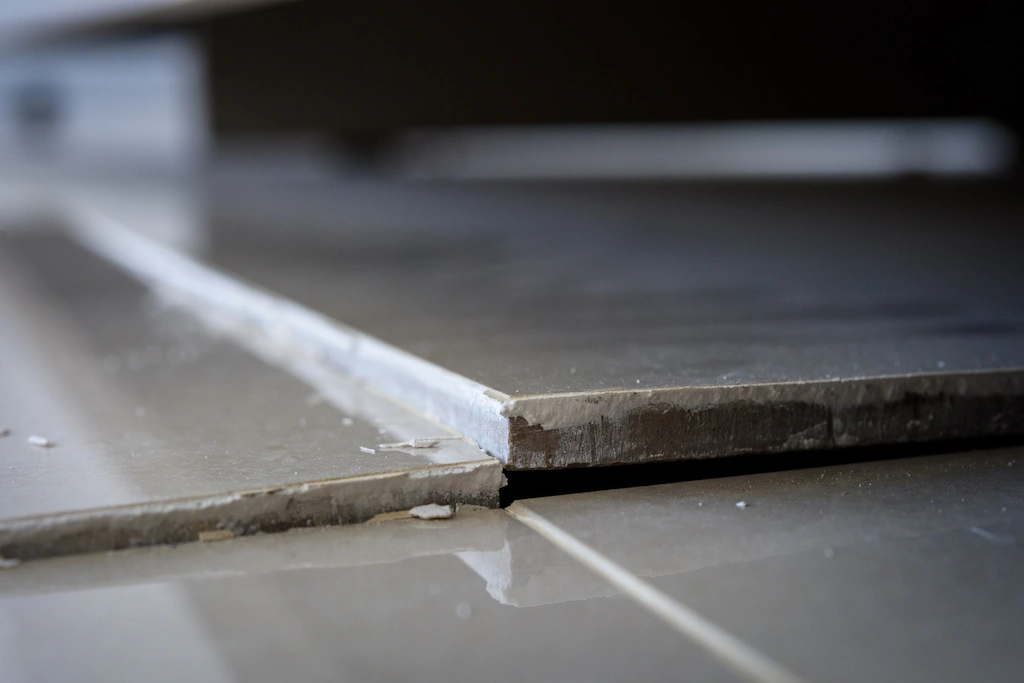Phone:
720-399-3335
Office address:
1685 S. Colorado Blvd. Suite 151, Denver, CO 80222

Have you ever wondered if the old ceiling or flooring tiles in your home contain asbestos? It’s a common concern that many of us share, yet the answer is rarely straightforward.
Understanding the potential risks associated with asbestos tiles is crucial for safeguarding our health, as well as the well-being of those around us. Join us as we uncover some truths behind these hidden dangers and explore the necessary steps to ensure a safe living environment.
Here, we’ll help you navigate the complexities of managing asbestos tiles and discover the best practices for handling this hazardous material.
Key Takeaways

Asbestos tiles pose serious health risks due to the release of asbestos fibers when the tiles are disturbed or in disrepair. These fibers become airborn, and breathing them in can lead to major respiratory issues.
Proper safety measures, such as following proper removal guidelines and working with asbestos professionals, are crucial to minimize exposure risks.
Understanding the potential health risks associated with asbestos tiles is vital for anyone who may come into contact with them during renovation or maintenance activities.
When these tiles are damaged or deteriorate, they release microscopic fibers into the air. Prolonged inhalation of asbestos fibers can lead to serious respiratory issues, including lung cancer and mesothelioma. It’s essential to be able to identify asbestos floor or ceiling tiles to take necessary precautions. Proper identification of asbestos tiles is key to minimizing the health risks associated with them.
If you suspect you have asbestos floor or ceiling tiles, it’s important to seek professional help for safe identification and repair or removal.
When renovating or maintaining spaces with asbestos tiles, it’s imperative to implement proper safety measures to reduce the health risks associated with potential asbestos exposure.
To ensure safety, it’s crucial to identify asbestos tiles correctly before starting any work. The best way to find out if you have asbestos tiles is through professional testing with fully trained and certified asbestos building inspectors. If asbestos is confirmed, it’s recommended to seek support from professional asbestos abatement contractors.
When working with asbestos-containing materials, protective gear such as masks, gloves, and goggles should always be worn, and the work area should be sealed off to prevent the possible spread of asbestos fibers. Appropriate disposal methods for asbestos-containing materials must also be followed to minimize exposure to others.

When identifying asbestos tiles, it’s important to note that they were commonly used in both ceiling and floor applications.
Asbestos ceiling tiles were popular due to their fire-resistant properties, while asbestos floor tiles were favored for their durability and resistance to moisture.
Understanding the characteristics of these tiles can help homeowners identify potential asbestos-containing materials in their homes. To determine with certainty if your tiles have asbestos, it’s advisable to hire a professional asbestos inspector, such as EnvioCore, who can collect samples for testing.
Identifying asbestos ceiling tiles requires a careful examination and testing process to ensure the safety of the home’s occupants. Asbestos ceiling tiles were commonly used in buildings constructed before the 1980s for their fire-resistant and sound-absorbing properties.
Some clues that help indicate asbestos ceiling tiles include date of manufacture before the 1980s (when asbestos was commonly used in construction materials), white or gray color, may have a rough texture and speckled appearance, and are often 12 by 12 inches in size.
If you suspect your ceiling tiles contain asbestos, it’s crucial to refrain from disturbing them and seek professional help for testing and removal to prevent exposure to this hazardous material.
Call Now
You Can Call Us At This Number: 720-399-3335
To help identify potential asbestos flooring, some key characteristics include tiles in 9 by 9-inch size, often with a vinyl or linoleum appearance, common in buildings constructed before the 1980s. These floor tiles often have a unique pattern and are more rigid than modern tiles. They were commonly used due to their durability and fire-resistant properties.
When dealing with old floor tiles, it’s of the utmost importance to handle them with caution, as disturbing them may release asbestos fibers. If you suspect your floor tiles contain asbestos, or if you plan to remove or replace floor tiles, it’s advisable to seek professional help for testing and removal to ensure safety.
Upon discovering asbestos tiles in your home, it’s crucial to prioritize safe management practices to prevent long term health risks. Regularly monitor the condition of the tiles for any signs of damage or deterioration. When handling asbestos tiles, always wear appropriate personal protective equipment, such as a respirator and gloves, and seek professional assistance for proper management strategies.
When managing asbestos tiles, carefully consider removal options that prioritize safety and minimize the risk of exposure.
If asbestos has been confirmed with formal testing, it’s recommended to hire certified asbestos removal professionals to safely handle the process. They have the expertise and equipment to minimize the release of asbestos fibers into the air. Encapsulation (involves sealing the tiles to prevent fiber release) or enclosure (tiles are covered with a protective barrier) are also options that can be considered depending on the condition of the tiles. It is best to work directly with an abatement professional to determine the safest course for your specific situation.
Considering the potential risks associated with asbestos exposure, it’s recommended to work with professionals to remove any asbestos tiles. If you choose to forgo professional abatement, it is crucial to approach DIY removal of asbestos tiles with caution and strict adherence to safety guidelines.
To safely remove asbestos tiles, it’s recommended to wet the tiles to minimize the release of fibers. Wear appropriate personal protective equipment such as disposable coveralls, gloves, and a respirator. Use plastic sheeting to seal off the work area and clean up thoroughly using wet mops and HEPA vacuums. Following these DIY removal tips for asbestos tiles can help mitigate the risks associated with asbestos exposure.
Yes, harmful fibers from asbestos can be released into the air even if the tiles aren’t disturbed or damaged. Asbestos fibers can become airborne through deterioration over time, leading to potential health risks. When inhaled, these fibers can cause serious respiratory issues. It’s crucial to handle asbestos-containing materials with care and seek professional assistance for proper removal to minimize exposure and ensure safety.
Exposure to asbestos tiles can lead to severe long-term health effects. Asbestos fibers, if inhaled, can cause lung scarring, respiratory issues, and even cancer over time. It’s crucial to understand the risks associated with asbestos exposure and take necessary precautions to minimize health hazards. Regular monitoring and professional removal of asbestos-containing materials are essential to safeguard against potential health complications down the line.
Once asbestos tiles have been removed from a home, it’s crucial to follow safe disposal practices. Contact your local waste management or Colorado Department of Public Health and Environment (CDPHE) for specific guidelines. Typically, asbestos-containing materials should be double-bagged in heavy-duty plastic and labeled as hazardous waste. It’s essential to transport them to a designated disposal site that handles hazardous materials. Safety precautions like wearing protective gear and avoiding breakage during removal are critical to prevent exposure.
Yes, it’s possible to encapsulate asbestos tiles instead of removing them. Encapsulation involves sealing the tiles with a special coating to prevent the release of asbestos fibers. This method can be a viable solution if the tiles are in good condition and not disturbed. However, it’s crucial to consult with a professional to ensure proper encapsulation and to follow safety guidelines.
CDPHE Regulation 8 creates the framework for handling asbestos in your home. Coordinating with state-certified professional asbestos inspectors and abatement professionals will help ensure this regulation is followed to the letter. It’s crucial to ensure compliance with the law to protect all involved.
In conclusion, it’s vital to be aware of the health risks associated with asbestos tiles and take necessary precautions when dealing with them.
Identifying and managing asbestos tiles in a safe manner is essential to protect yourself and others from exposure.
Stay informed and take action to safeguard your well-being. EnvioCore is here to help!